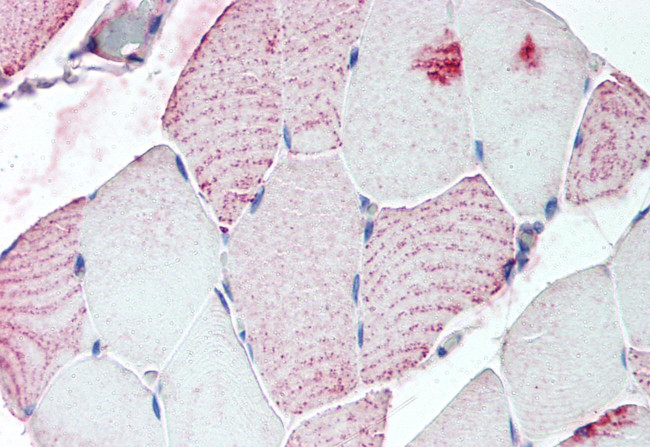Search Thermo Fisher Scientific
Product Details
PA5-34173
Species Reactivity
Host/Isotype
Class
Type
Immunogen
Conjugate
Form
Concentration
Purification
Storage buffer
Contains
Storage conditions
Shipping conditions
RRID
Product Specific Information
Percent identity with other species by BLAST analysis: Human, Gorilla (100%) Gibbon, Rabbit (94%) Monkey, Rat, Panda, Bovine, Dog, Horse (89%) Mouse (83%).
Target Information
The activity of this relaxin receptor is mediated by G proteins leading to stimulation of adenylate cyclase and an increase of cAMP and may also be a receptor for Leydig insulin-like peptide. Expressed in embryonic and adult gonads of males and females, as well in male gubernarculum and in brain. Not detected in kidney, spleen and heart.
For Research Use Only. Not for use in diagnostic procedures. Not for resale without express authorization.
References (0)
Bioinformatics
Protein Aliases: G protein coupled receptor affecting testicular descent; G protein-coupled receptor 106; G-protein coupled receptor 106; G-protein coupled receptor affecting testicular descent; leucine-rich repeat-containing G protein-coupled receptor 8; Leucine-rich repeat-containing G-protein coupled receptor 8; Relaxin family peptide receptor 2; Relaxin receptor 2; relaxin/insulin-like family peptide receptor 2
Gene Aliases: GPR106; GREAT; INSL3R; LGR8; LGR8.1; RXFP2; RXFPR2
UniProt ID: (Human) Q8WXD0, (Mouse) Q91ZZ5
Entrez Gene ID: (Human) 122042, (Mouse) 140498

Performance Guarantee
If an Invitrogen™ antibody doesn't perform as described on our website or datasheet,we'll replace the product at no cost to you, or provide you with a credit for a future purchase.*
Learn more
We're here to help
Get expert recommendations for common problems or connect directly with an on staff expert for technical assistance related to applications, equipment and general product use.
Contact tech support

